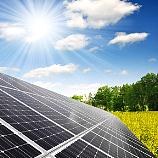(LUXEMBOURG) – EU ministers agreed reduced energy efficiency targets Monday, of 30 per cent by 2030, as well as what has been termed an ‘unambitious’ revision of the Energy Performance of Buildings Directive.
The compromise energy efficiency target, agreed after long and difficult negotiations, is much less than the 40% target supported previously by the European Parliament.
Environmental groups were quick to express disappointment with the outcome of the Council. The WWF said the revision of the Energy Performance of Buildings Directive did nothing “to increase the rate of energy renovations in buildings.”
The two revised directives covered:
- energy efficiency, establishing a 30 % EU energy efficiency target and an energy savings obligation of 1.5 %, decreasing to 1.0% for the period 2026-2030, unless the Commission mid-term review in 2024 concludes that the EU is not on track to meet its targets.
- and energy performance of buildings aiming to promote energy efficiency in buildings and to support cost-effective building renovation with a view to the long term goal of decarbonising the highly inefficient existing European building stock.
The main elements of the revised directive on energy efficiency are:
- Overall EU energy efficiency target of 30%
- An energy savings obligations of 1.5%, decreasing to 1.0% for the period 2026-2030, unless the mid-term review in 2024 concludes that the EU is not on track to meet its targets
- Long term individual actions may count for energy savings obligation
- Alternative measures are recognised as equivalent to energy efficiency obligation schemes
- Possibility of partially counting renewable energy generated on-site towards savings in the 2020-2030 period
- Obligation to take into account energy poverty when designing new measures
- Improved metering and billing provisions for the benefit of final users of heating and cooling
The aim of the proposal on the energy performance of buildings is to promote energy efficiency in buildings and to support cost-effective building renovation with a view to the long term goal of decarbonising the highly inefficient existing European building stock.
The proposal requires EU Member States to establish long-term renovation strategies for buildings – the largest single energy consumer in Europe, consuming 40% of final energy – addressing also energy poverty. It strengthens the links between energy efficiency policy and financing.
The revised directive also promotes electro-mobility, requiring at least one charging point per ten parking spaces for electric vehicles in non-residential buildings and pre-cabling for every parking space in residential buildings. These requirements will apply to buildings with more than ten parking spaces.
The introduction of a smartness indicator for buildings is proposed and the inspection of heating and air conditioning systems is simplified.
Commenting on the decisions, Imke Luebbeke, head of climate and energy at WWF European Policy Office, said: “It should have been a no-brainer to support strong energy efficiency measures given the economic, climate and social benefits of doing so, and the ambition required by the Paris Agreement. Despite this, Member States have rushed to appease the lowest common denominator to reach a quick but bad deal, rather than putting in more time to try and get a better deal.”
The WWF said the ministers did not indicate whether the reduced targets will be binding or indicative. They said they undermined the current rule that states countries should save 1.5% energy per year by decreasing this objective to 1% between 2026 and 2030 and by adding additional loopholes.
The WWF was equally unhappy about the “unambitious” revision of the Energy Performance of Buildings Directive, “which does nothing to increase the rate of energy renovations in buildings; today only about 1% of buildings per year are renovated for energy efficiency improvements.”
At the Council meeting, the Council also adopted, without debate, a regulation on energy efficiency labelling which allows customers to be more aware of the energy efficiency and energy consumption of household appliances, thus helping them to reduce their energy costs and contributing to the moderation of energy demand.
Clearer energy labelling: improved energy efficiency
Transport, Telecommunications and Energy Council, 26/06/2017



